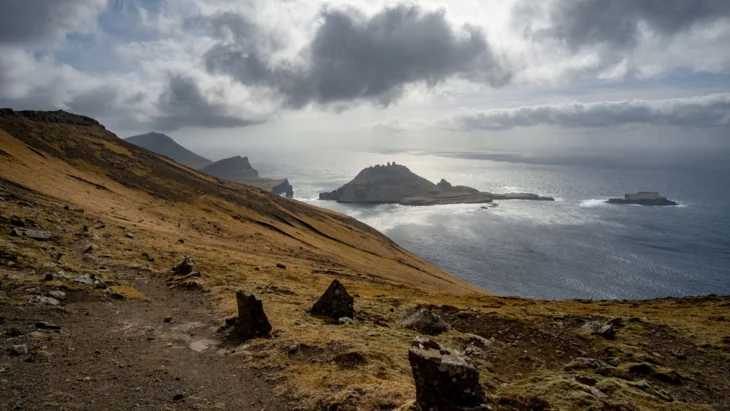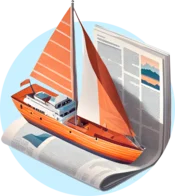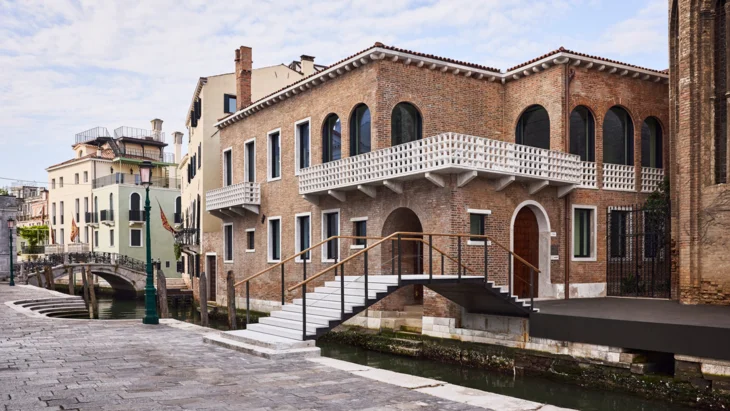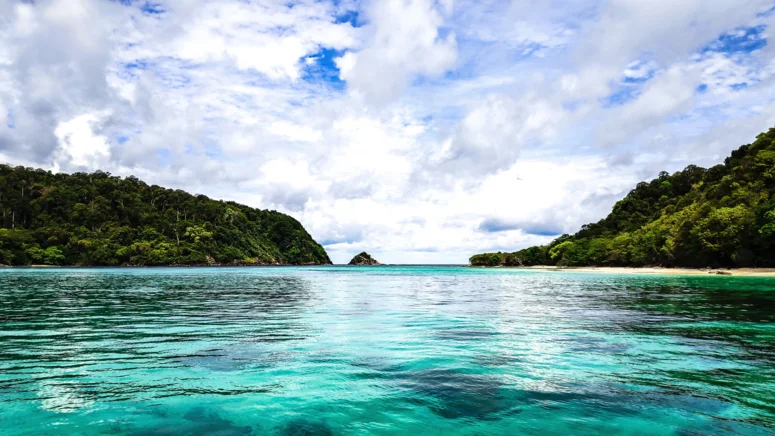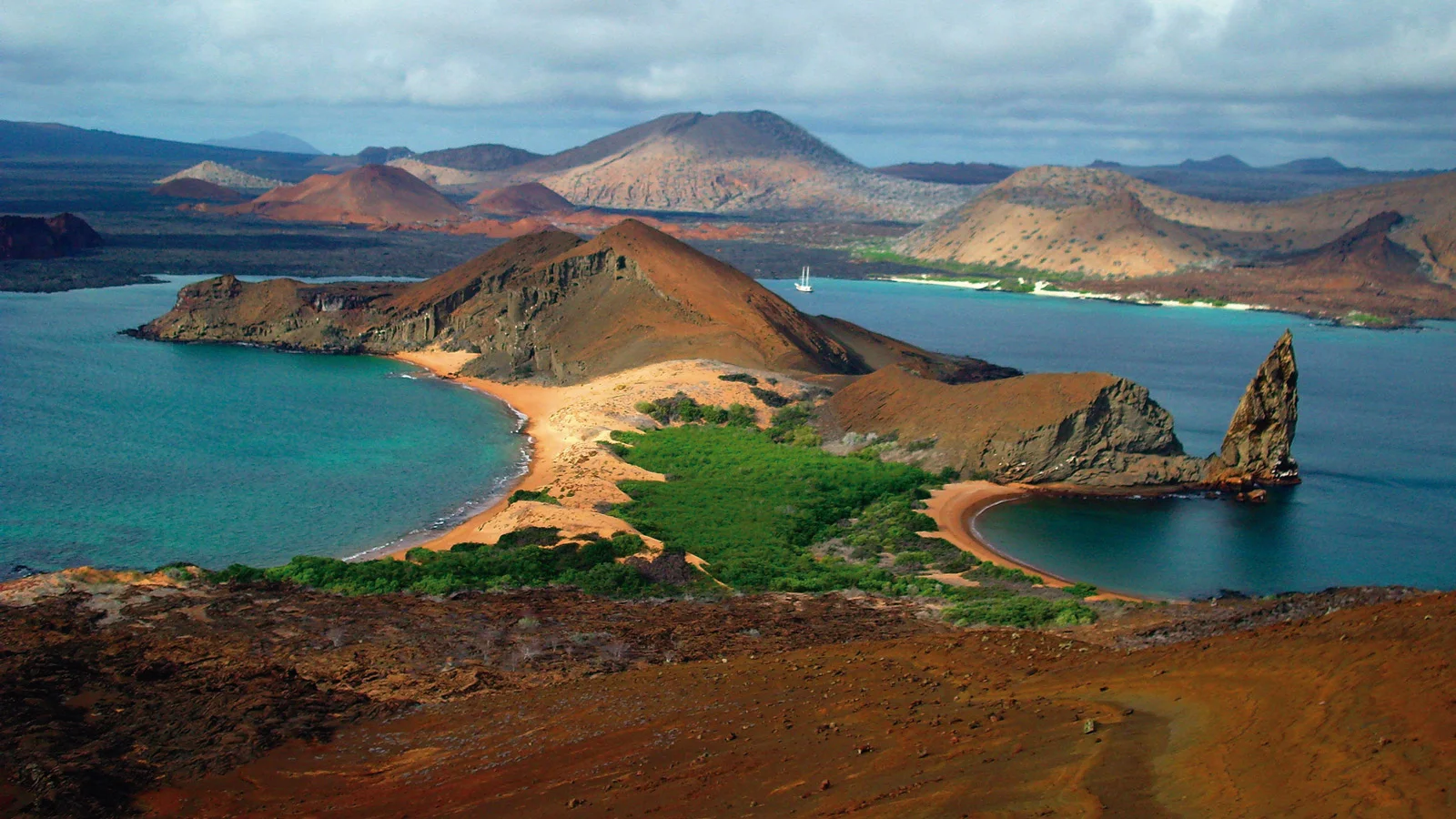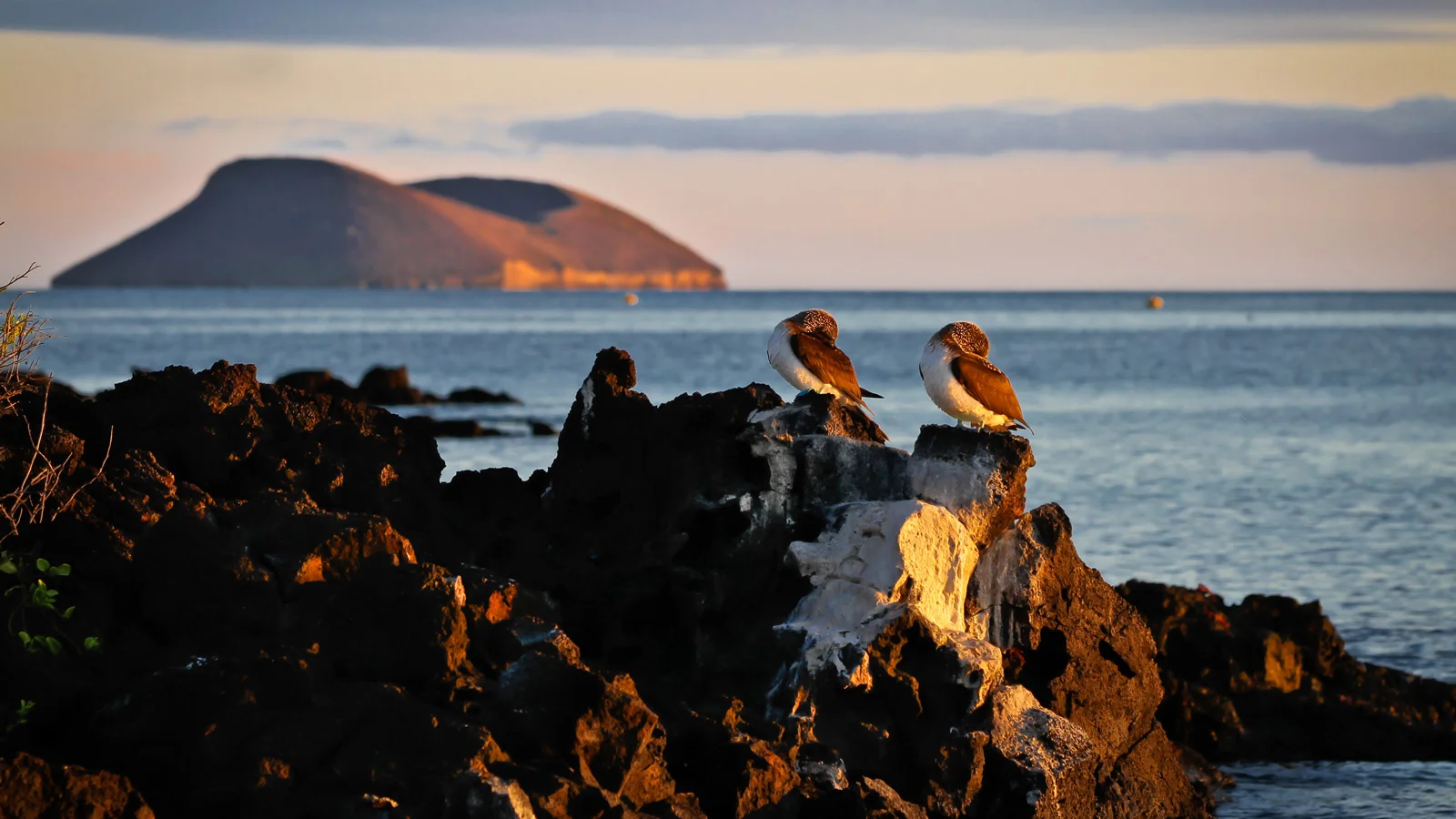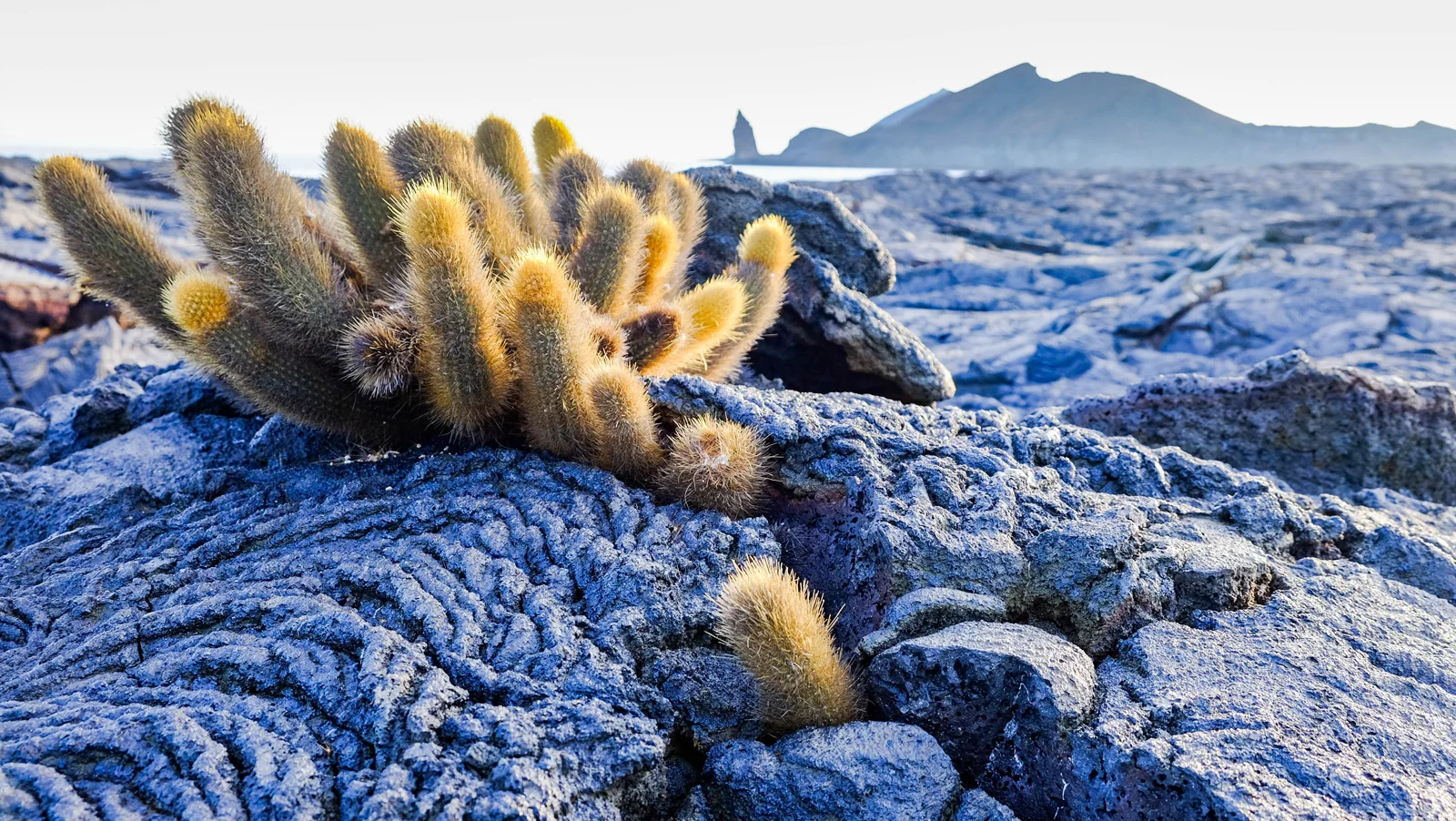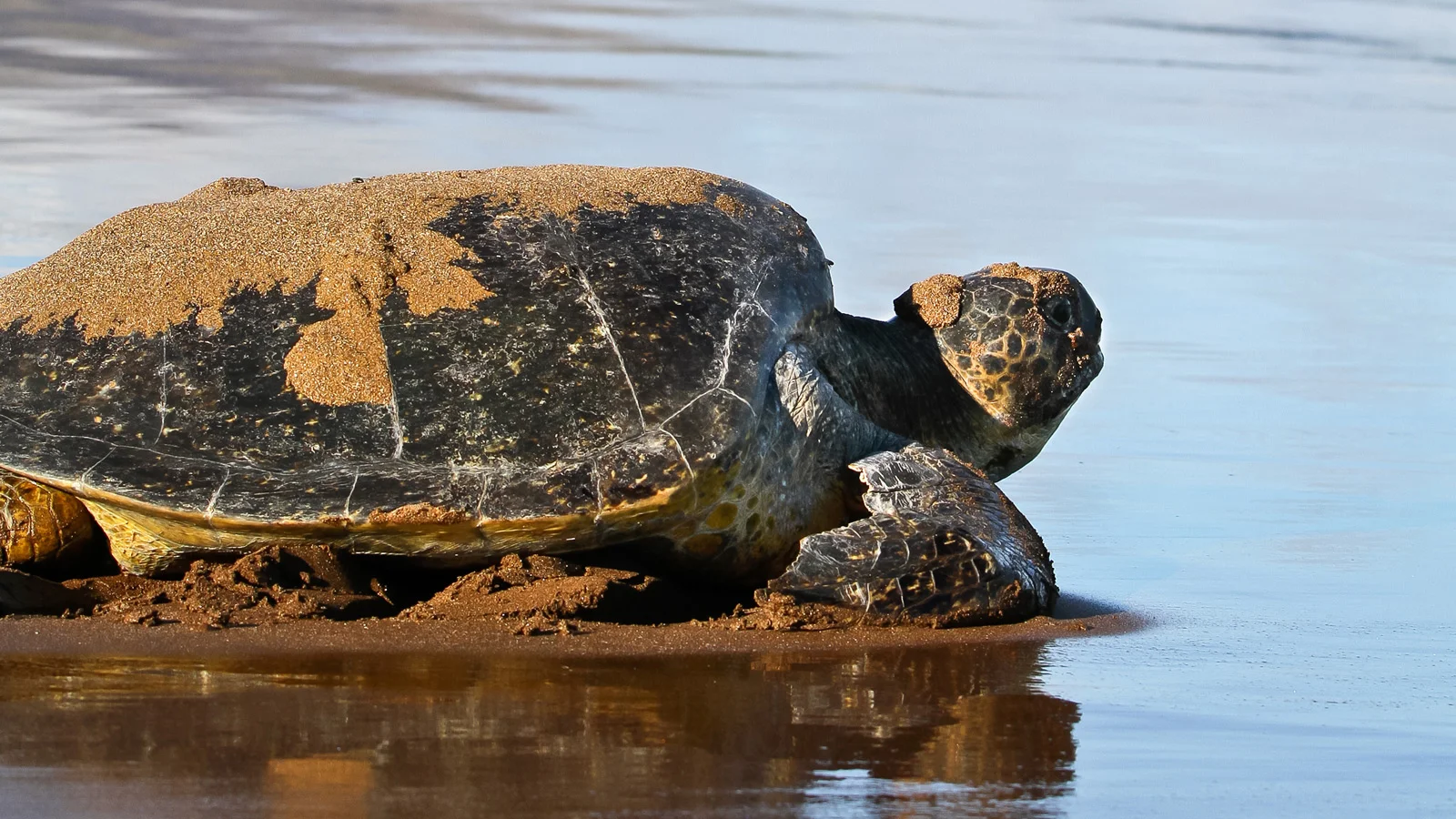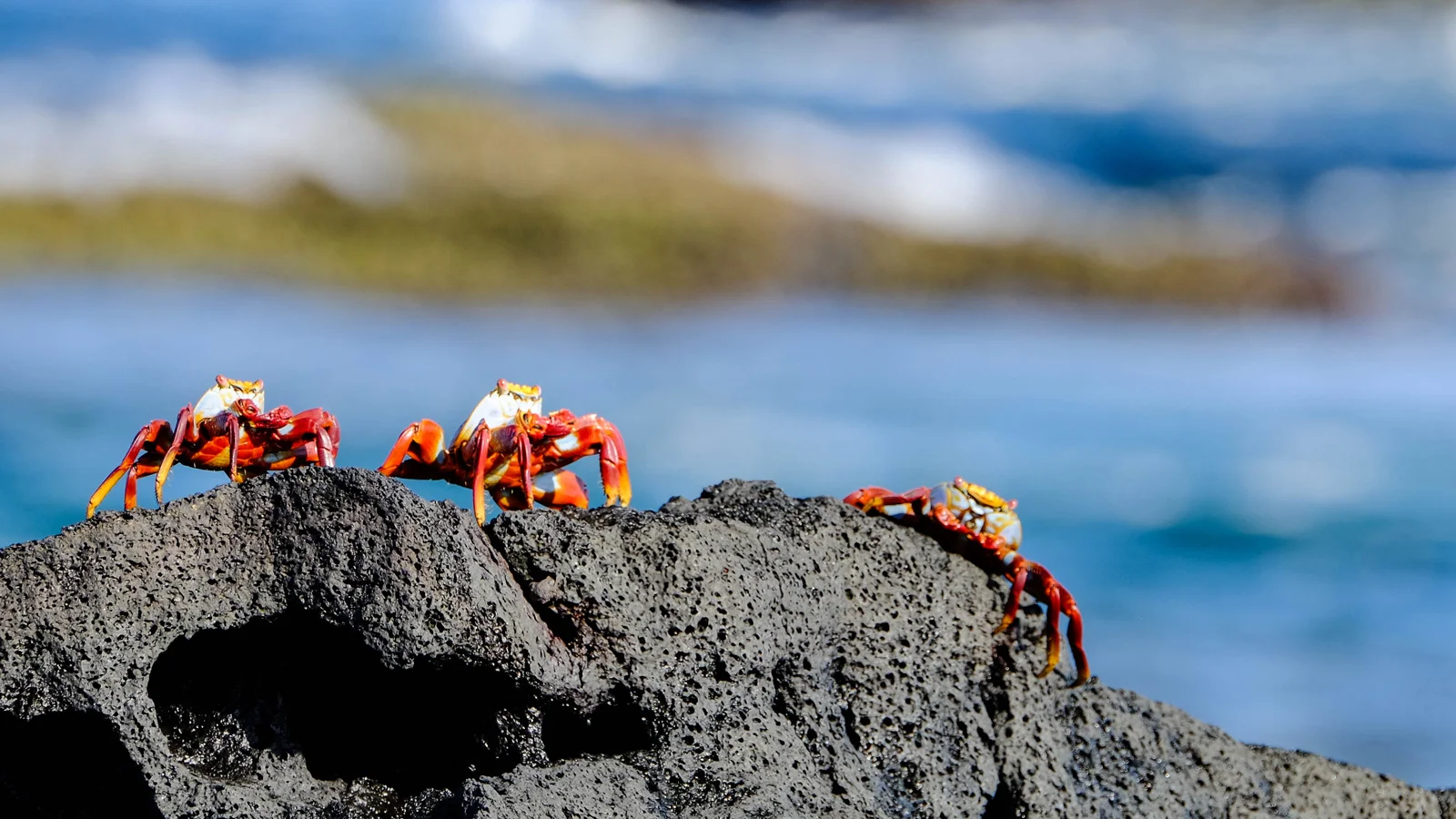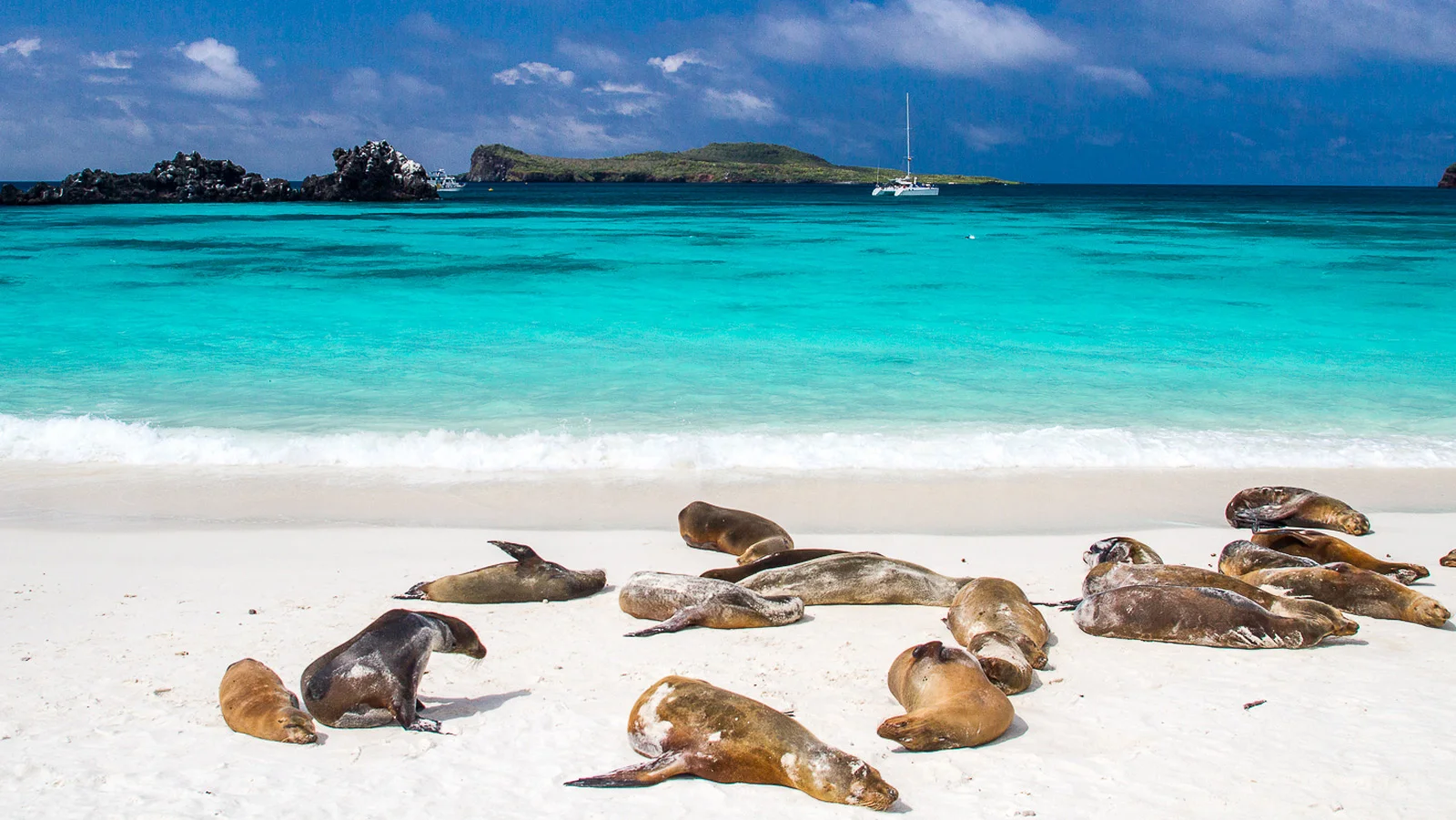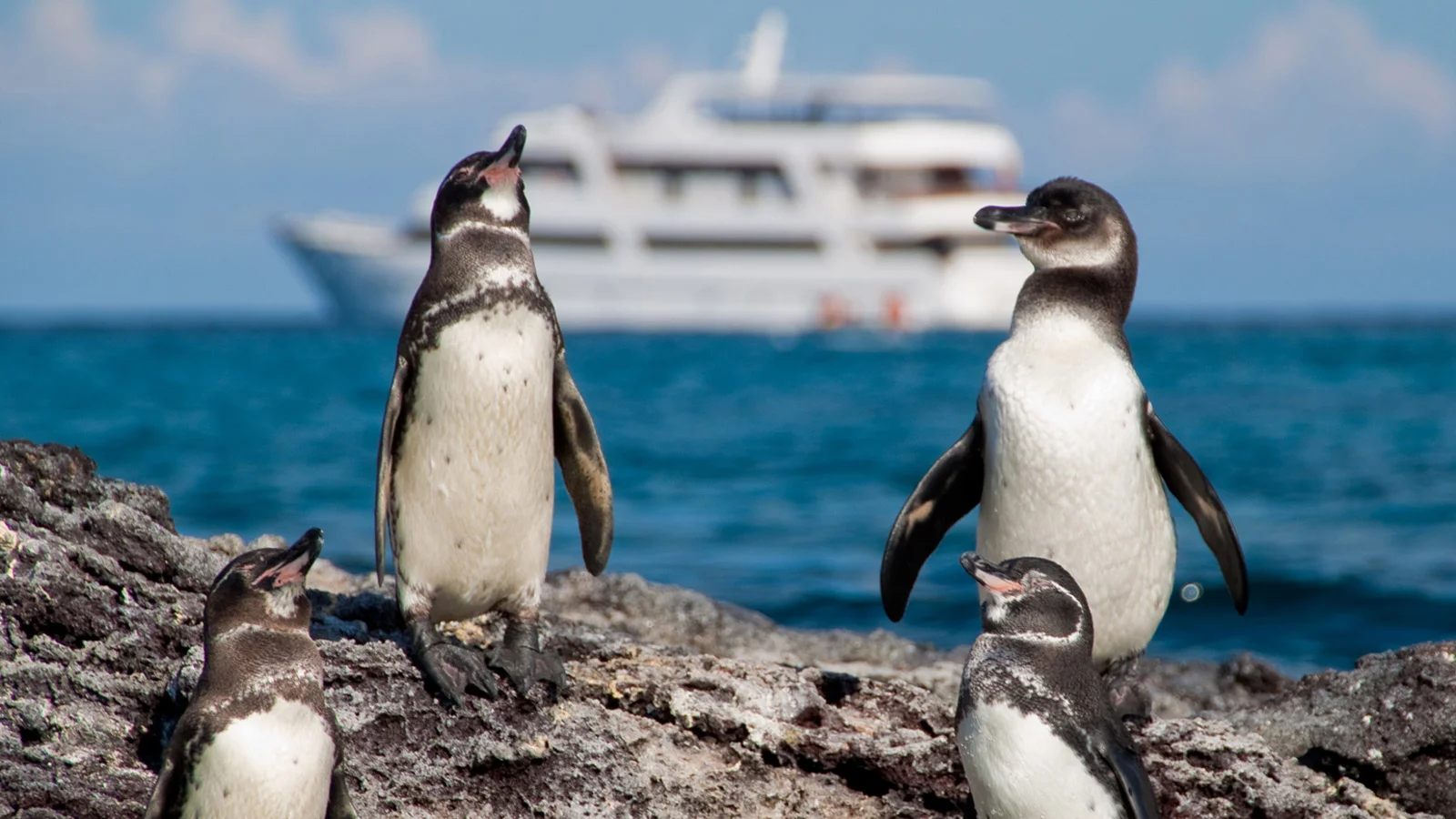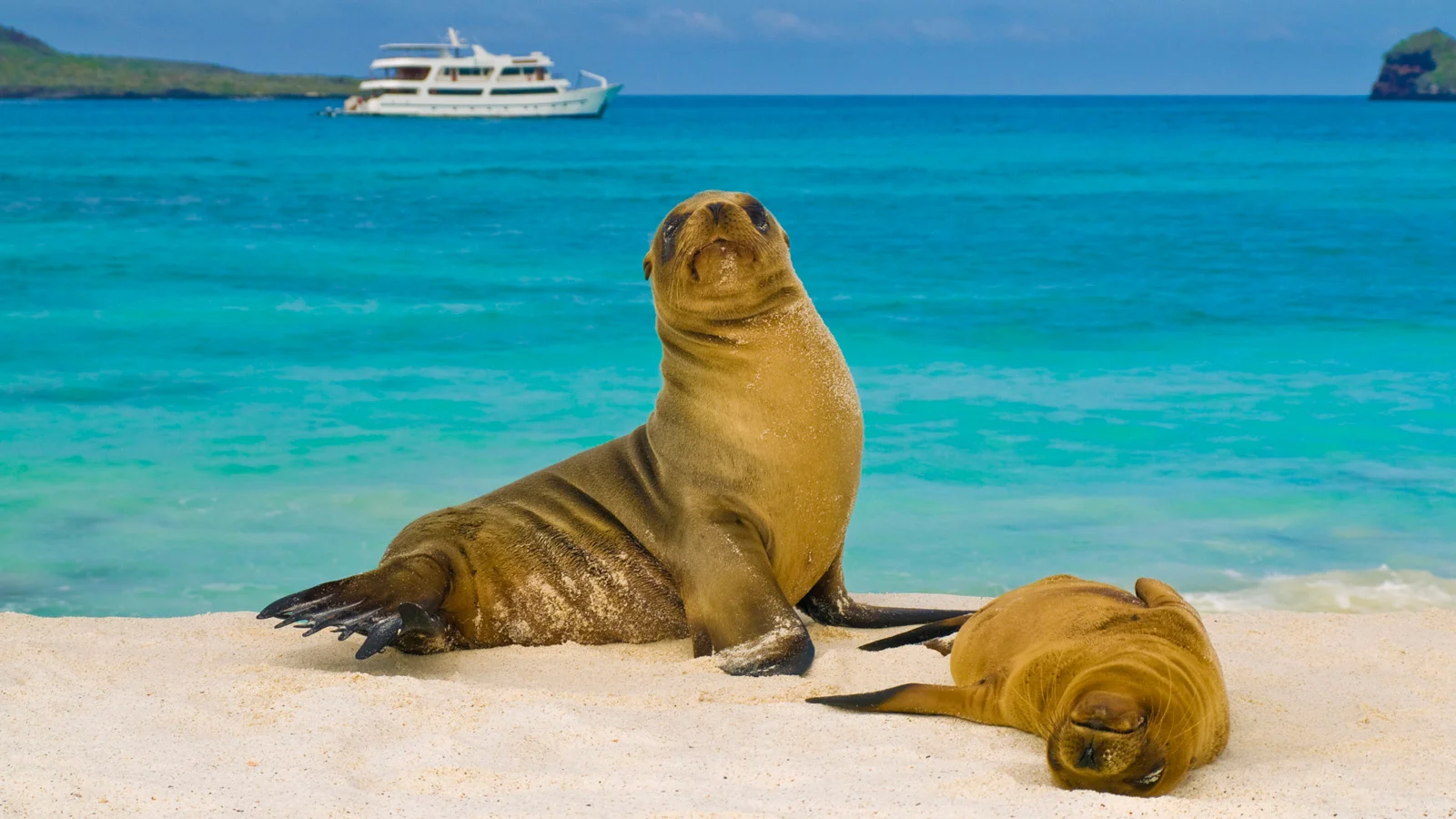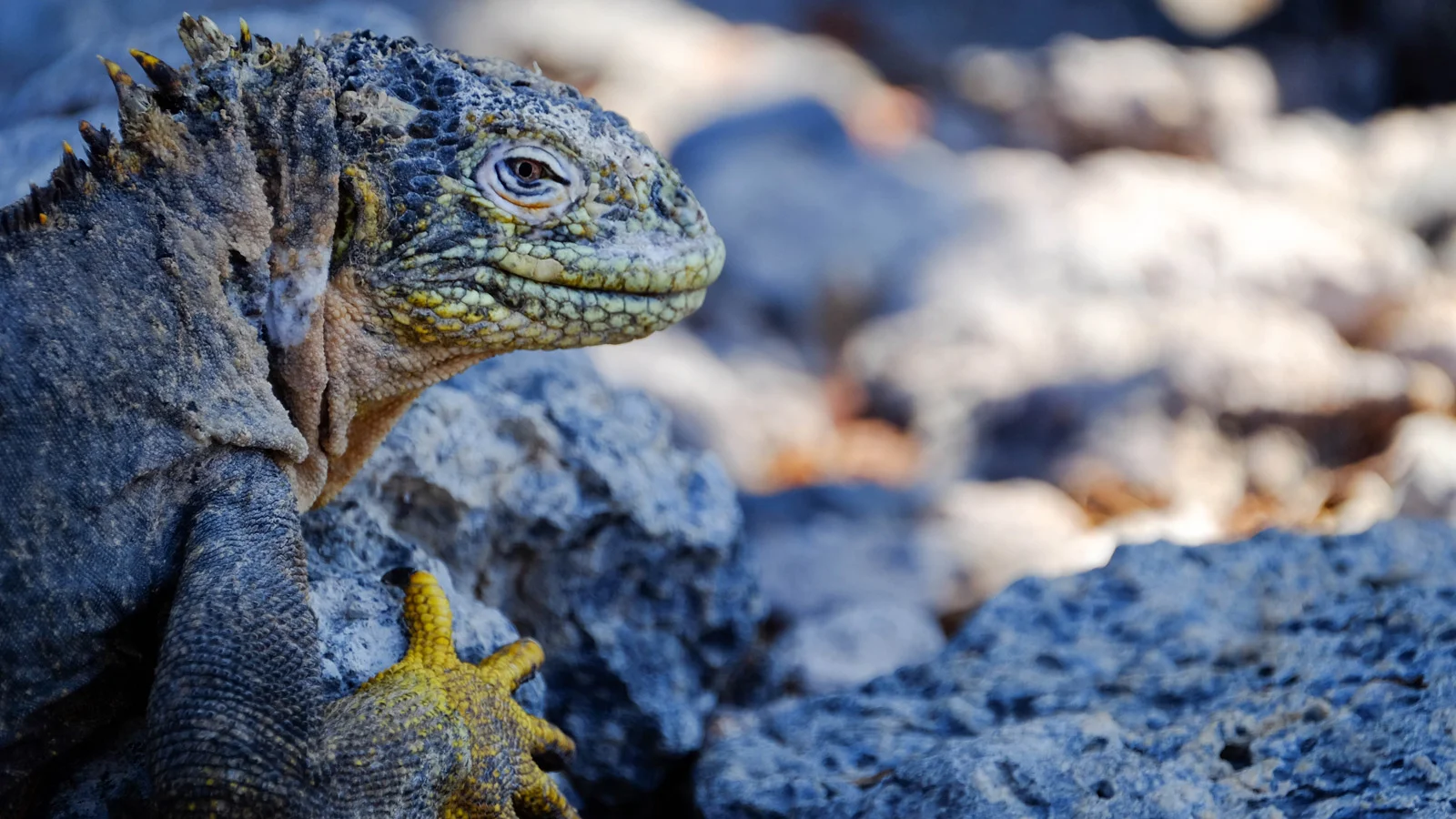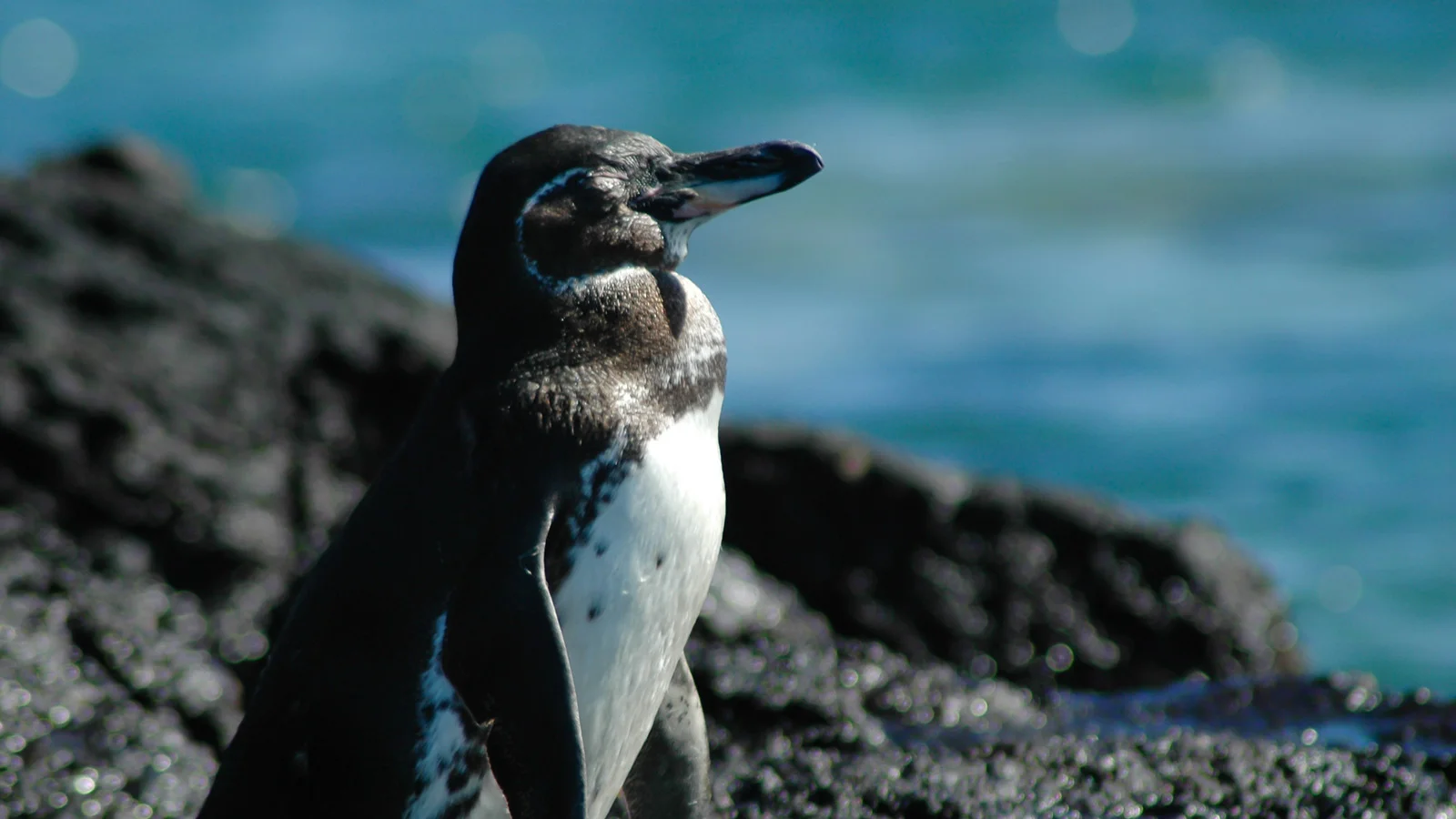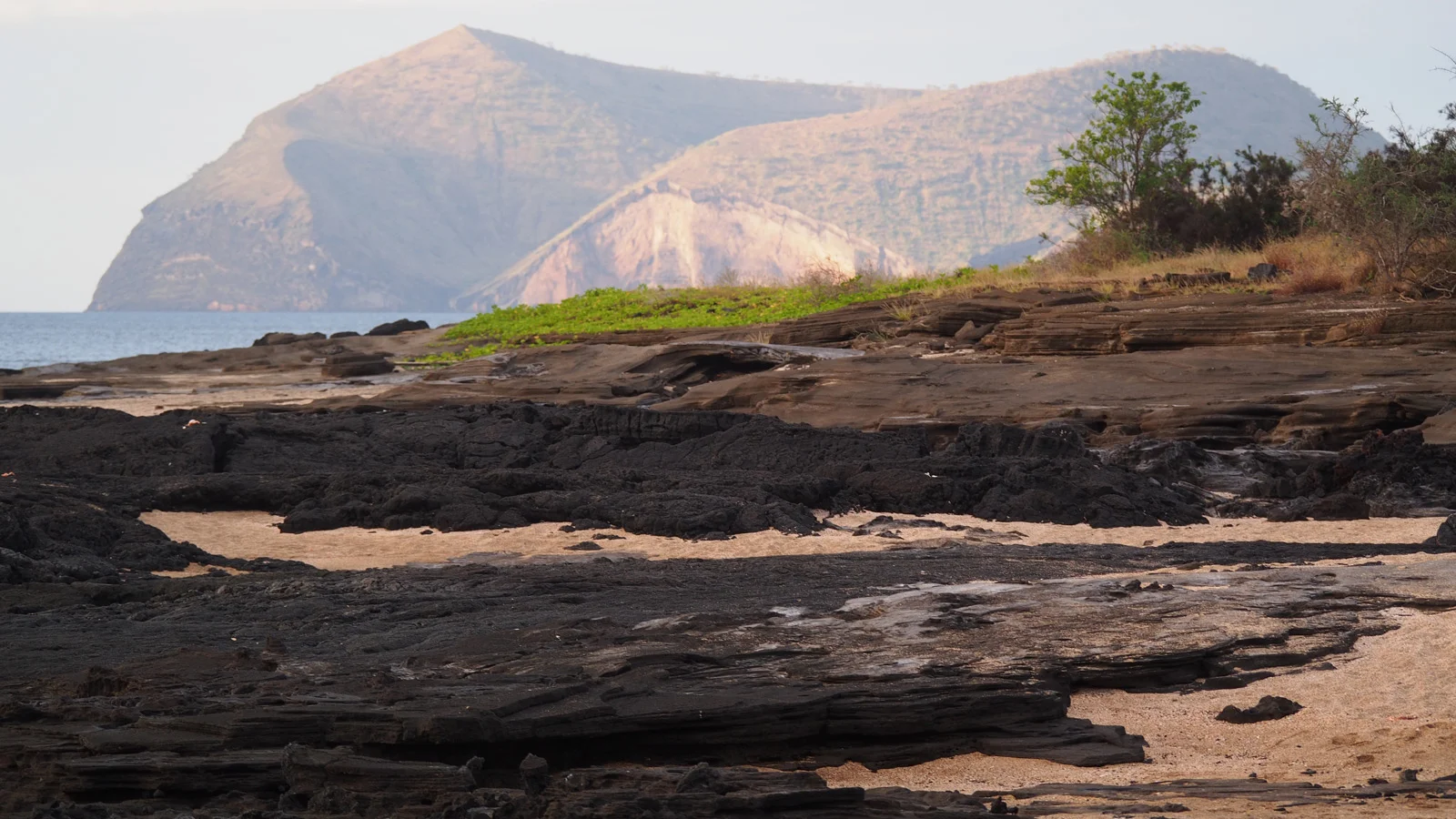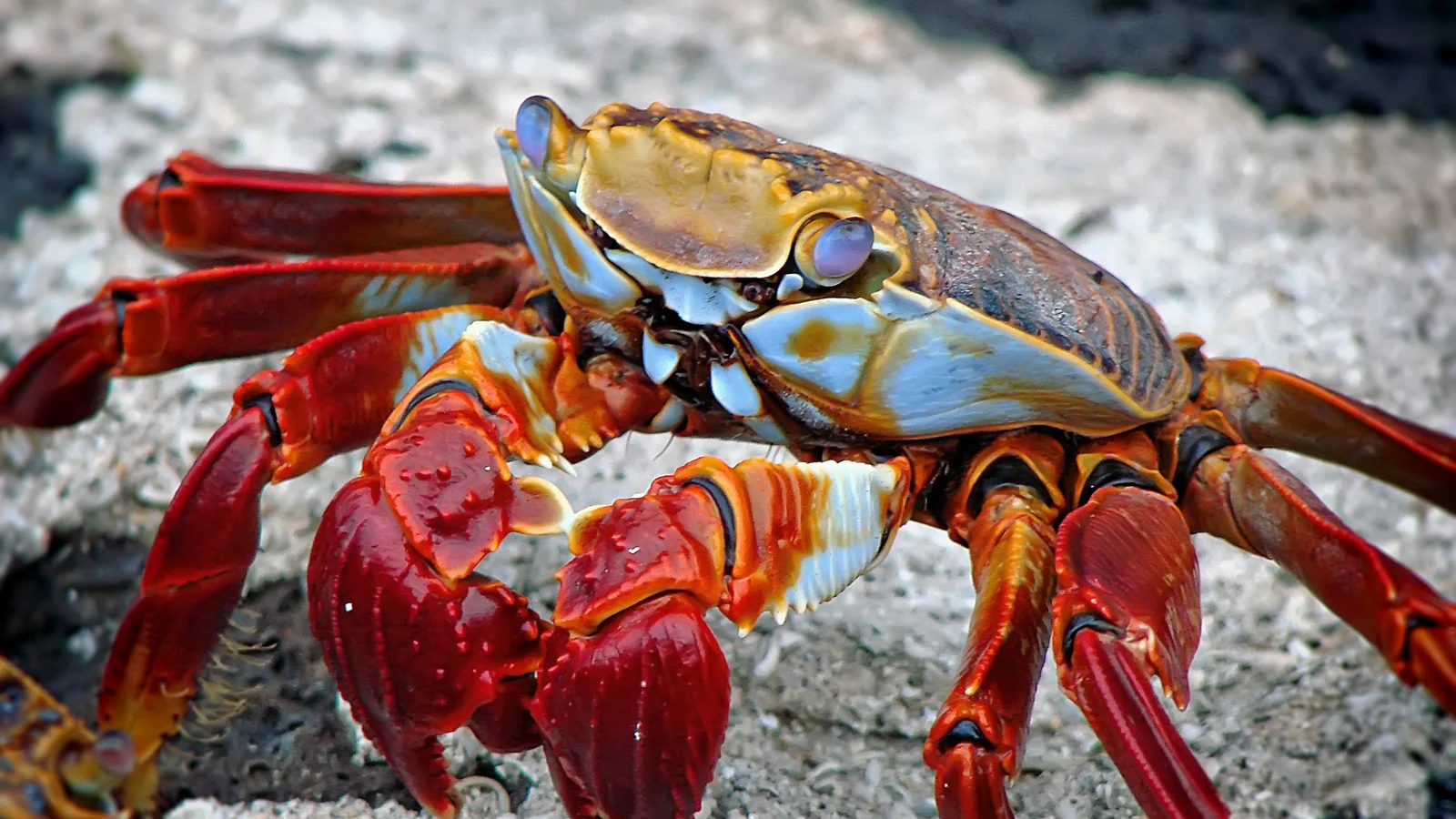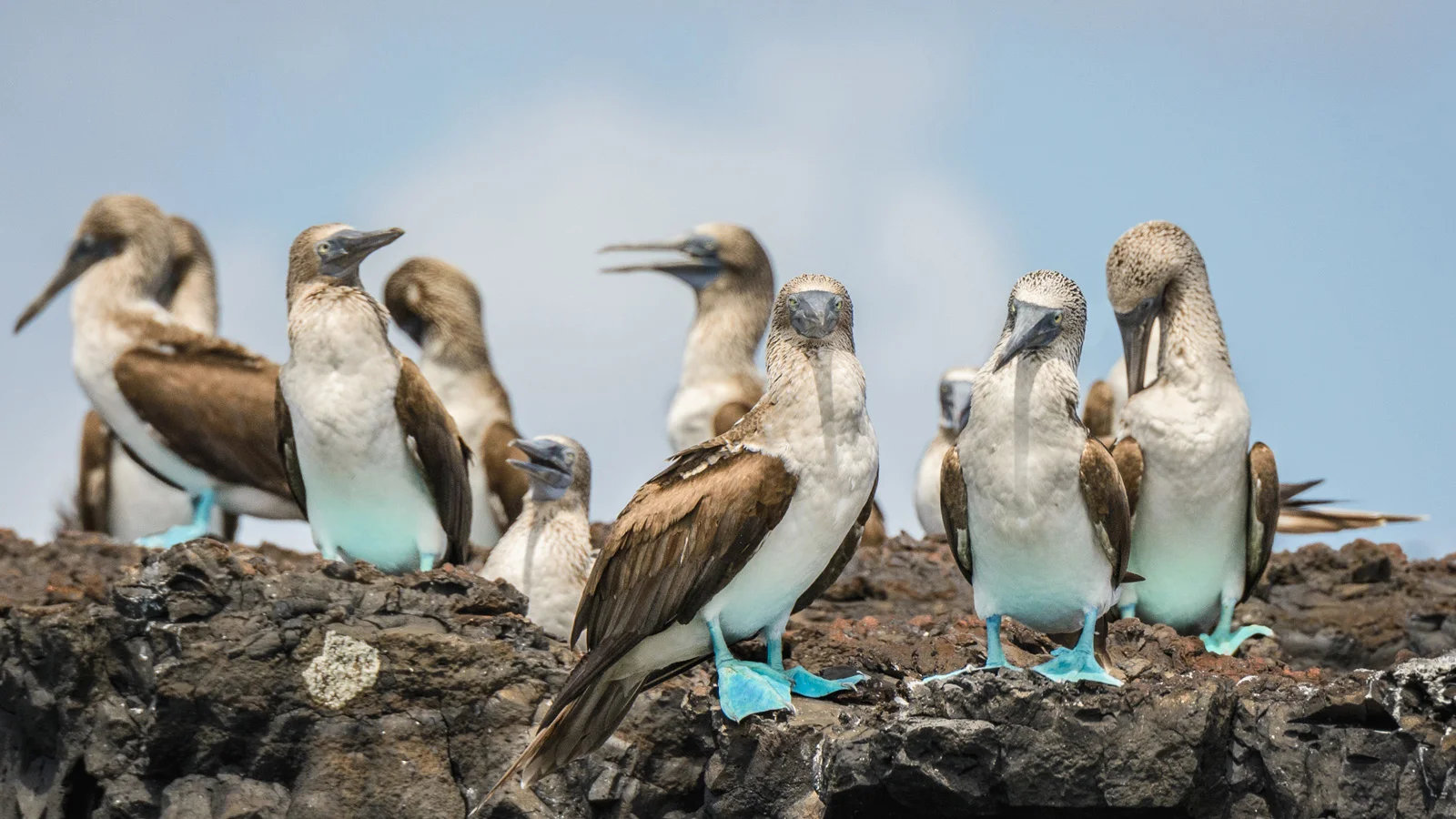Galápagos Islands: the Darwin Archipelago
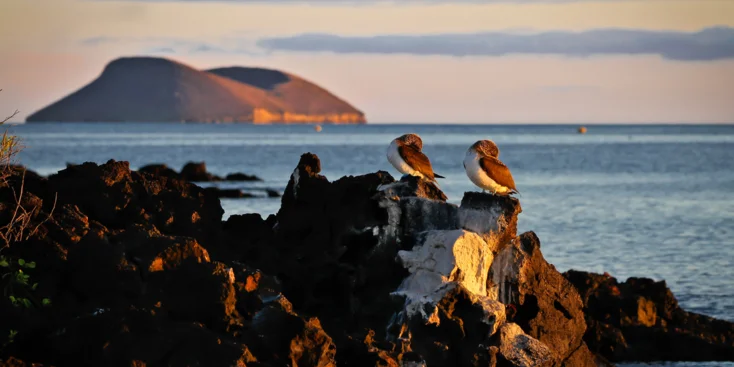
Nowhere else can you find such a variety of unusual animals that seem to have no fear of humans
Moreover, it’s not us, but them who perceive us as entertainment. On seeing a human, birds don’t fly away, and the giant tortoises on Santa Cruz Island keep grazing. It is probably the only place where there’s nothing unusual about seeing a sea-lion with its cubs, who will not be scared off by your yacht and can even invite you to play with them. And if you decide to join in and dive, they will circle around and swim under you again and again, playing like puppies and making their mysterious underwater signals. This is an absolutely unique experience that is sure to impress both nature lovers and all those who are just in search of adventure and thrills.
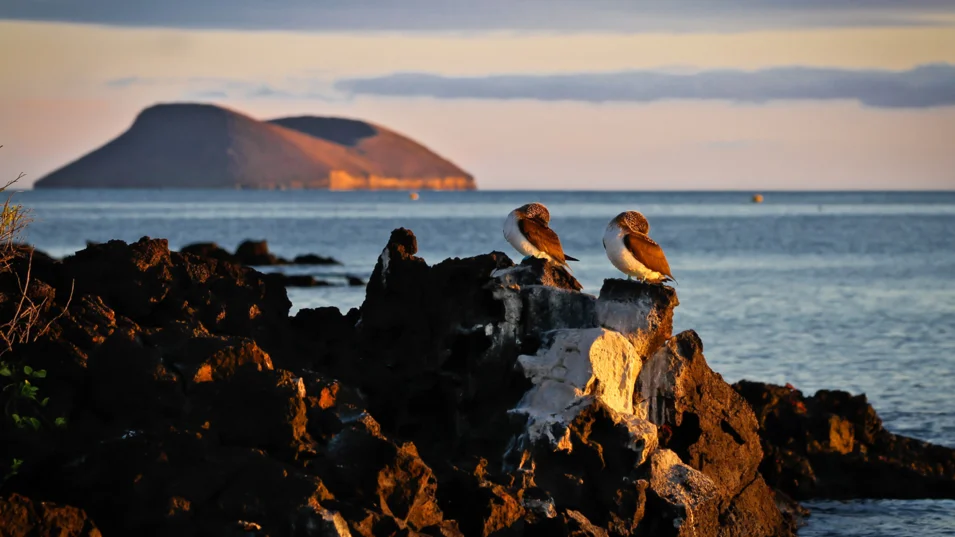
But what exactly is so special about the Galápagos? At least one thing is that more than a half of the species of the flora and fauna here are endemic, which means you can find them nowhere else but here. This is the only place on earth, where the composition of animals is identical to the one it started with, when the development of the species diversity of the area just began, while in the rest of the world it has changed dramatically over the past centuries. For example, the Hawaiian Islands can boast a larger number of endemic animals and plants, but because of the rate of their disappearance we can’t see what the nature was like there originally. In the “enchanted” Galápagos Islands everything seems to have frozen in time.
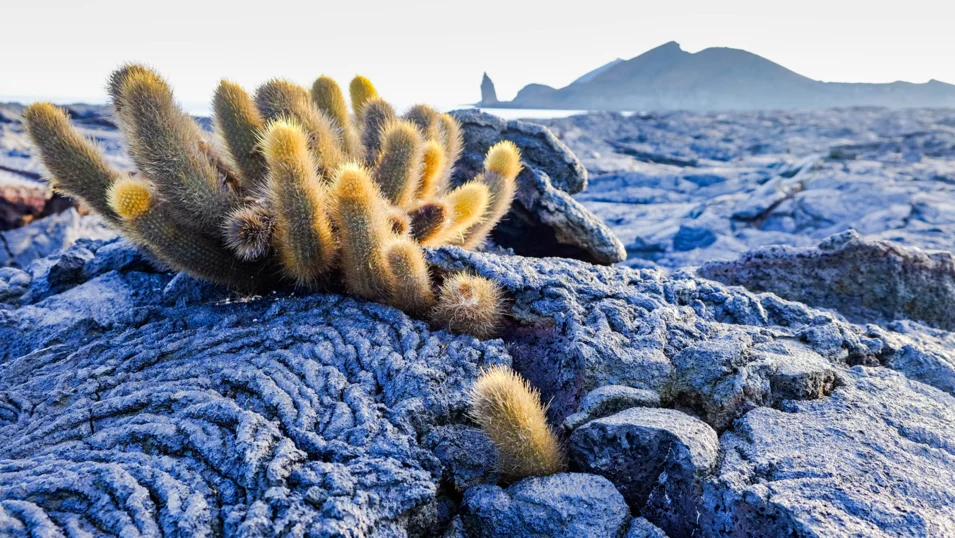
We owe a lot to Charles Darwin’s discoveries in this respect. In 1835 he landed on the islands during his round-the-world voyage on board the Beagle ship. Moreover, it is based on the results of the research he conducted here and in South America that his famous "The Origin of Species by Natural Selection" appeared. In 1959 there the Charles Darwin Foundation was created in order to preserve the ecosystem of the islands. Together with the Galápagos National Park and thanks to its strict rules for visitors, the Foundation helped to preserve this area, where the laws of nature still reign.
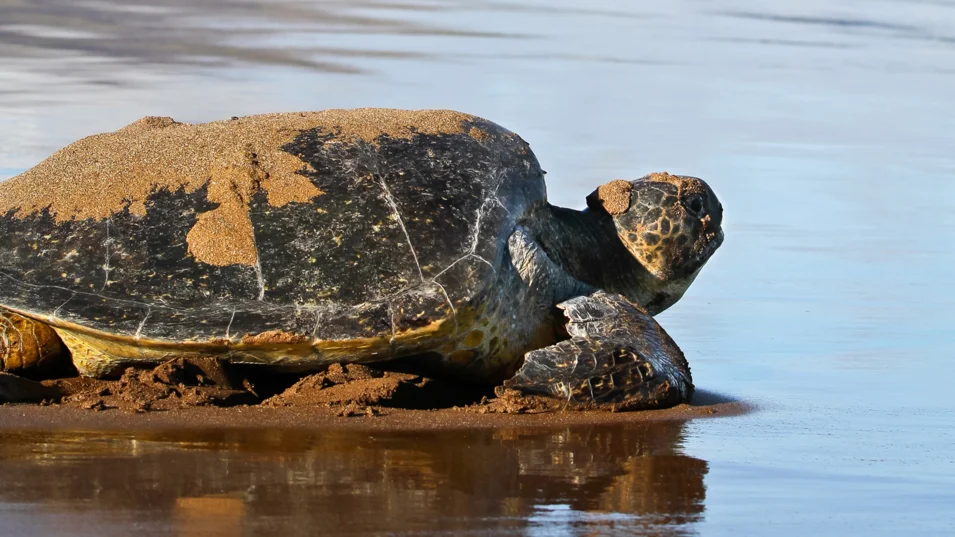
The National Park restricts the places where you can park your yachts and disembark, and it applies to both private and charter boats. Some yachtsmen, who are used to plotting routes on their own, might find such strict rules cumbersome, but they do help to keep the protected areas intact.
Located near the equator, the Galápagos Islands are at the confluence of ocean currents, which makes the local climate softer and cooler – quite unusual for these latitudes. But the same currents predetermined the exuberance of local flora and fauna. If the islands were just 20 degrees south or north, there would not be such a riotous abundance of different animals here. Depending on the location, the water temperature may vary from 13 to 27 degrees, so if you are not a winter swimmer, look before you leap into the water.
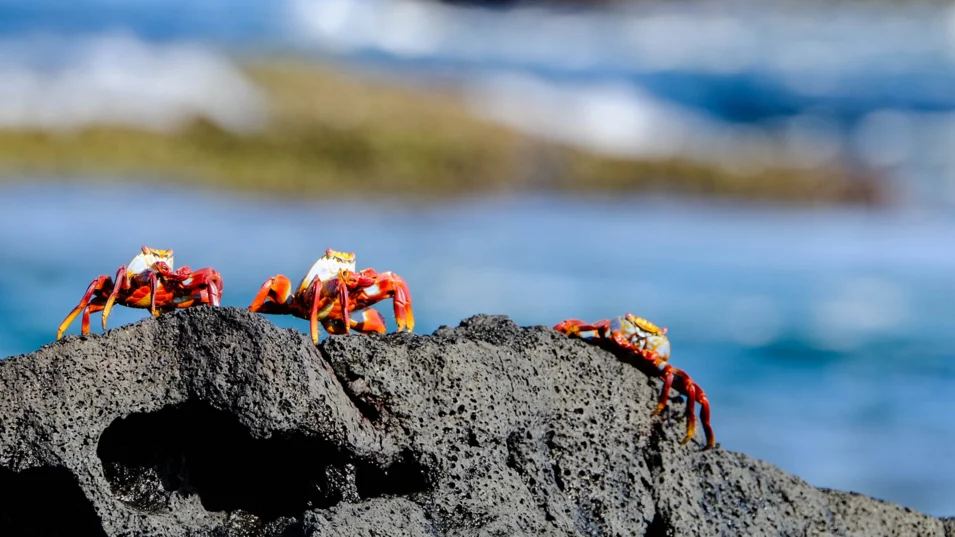
The combination of the richness of wildlife and remoteness from the rest of the world gives you a chance to see amazing pictures like a penguin standing on hardened lava surrounded by cacti. Hey, are these islands just 500 miles from the equator? It feels like they are far more remote from everywhere, like it’s something prehistoric, extra-terrestrial, otherworldly. And it is even more puzzling to find out that the islands here are strikingly different from each other.
On Jervis Island there are red sandy beaches, where sea lions recline proudly. The lava fields of San Salvador look like lunar landscapes, while Sullivan Bay on the same island can boast of a perfectly white sandy beach.
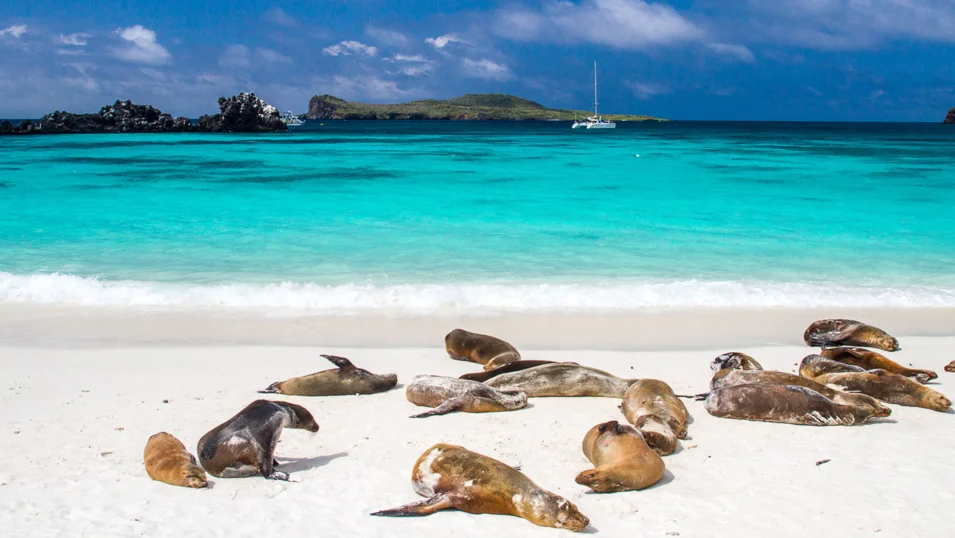
Henovesa Island, also known as Tower, is located in the northeast, and it got its name because of the stone plateau protruding stubbornly from the sea. This is a real bird island, where you will find boobies with red paws, huge red-breasted frigates, seagulls and owls. This island used to be Prince Philip's favourite, so one of the rocky shores is named after him. All of these islands are located to the east.
If you head west, there will be a range of volcanoes, which is one of the most active in the world. Both directions offer amazing mountain and coastal walks and scuba diving. Though for some it will be more pleasant just to relax on an open deck and contemplate the stunning scenery.
Further north, there are islands of Wenman (Wolf) and Culpepper (or Darwin – though the scientist actually never set his foot on it).Both are great for diving. If you rent one of the specially equipped diving boats, you can see whale sharks.
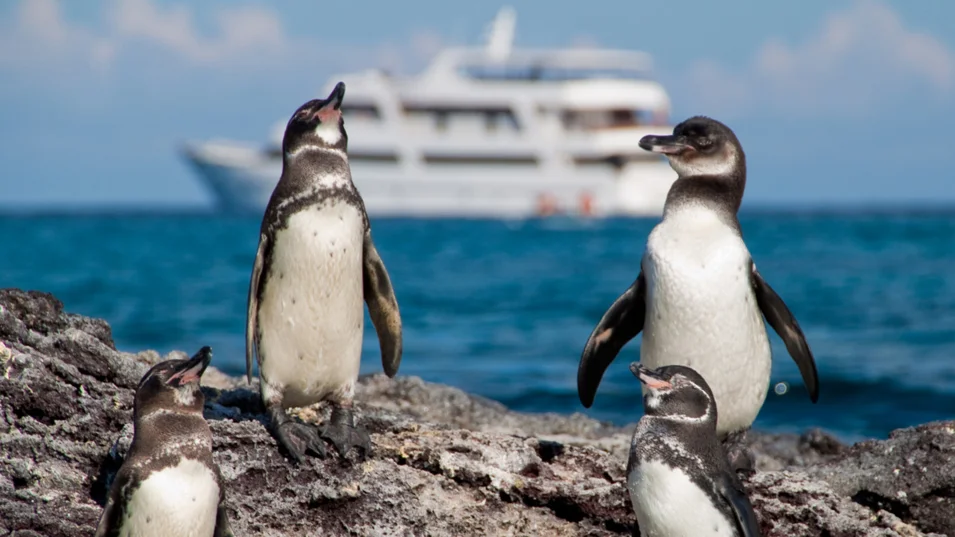
As you will see it on the islands, flamingos are far from being humble. They are used to communicating closely and actively with their fellow tribesmen. For captive birds people sometimes even use mirrors to make it seem to them that their pack is bigger. In the Galápagos the dwindling population of flamingos has adapted to life in smaller groups.
Penguins, on the contrary, turned out to be less flexible. Due to the climate change, their main food – anchovies – keeps going deeper and deeper, into the cold layers of water that penguins can’t reach. Because of this, penguins in the Galápagos actually suffer from a lack of food. Still people don’t feed them, as the main goal of this area is to preserve natural conditions and avoid human interference. It seems unlikely to work out in case of penguins, but scientists hope that this will allow the population of some other species that had almost been destroyed by man to return to their original volume. For example, the number of tortoises was about a few million, until people started exterminating them and brought the number down to just 1400.
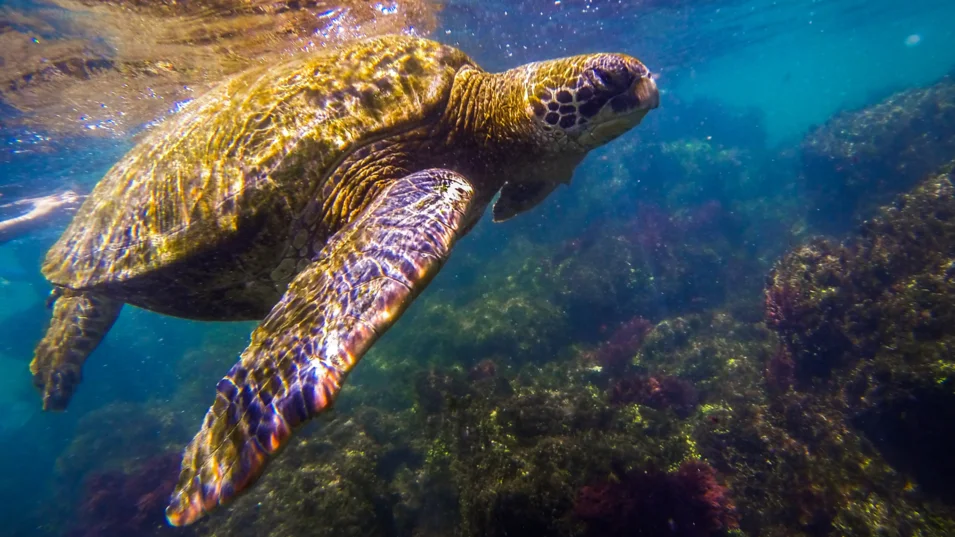
All the visitors to the National Park are treated kindly and not perceived as potential destroyers of the ecosystem. It is believed that when people see how fragile this world is with their own eyes, they will behave differently and feel more responsible.
The Galápagos Islands with their wild nature and picturesque landscapes are waiting for their discoverers - photographers, scientists, ornithologists, adventurers and yachtsmen. One of the main advantages of visiting the Galápagos on a yacht is the level of comfort that you can keep while actually being in one of the most remote corners of the globe, away from civilization.
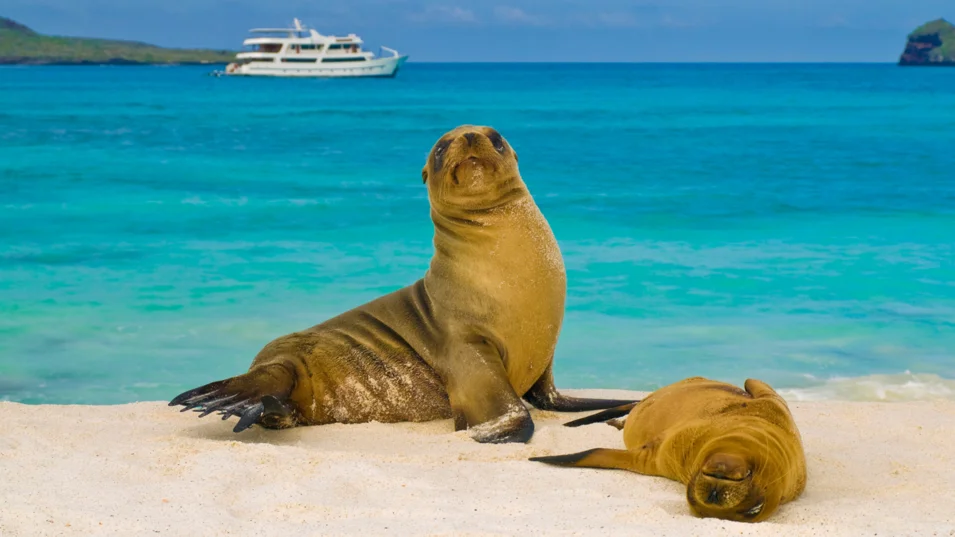
Must-see places in the Galápagos
Isabela Island
The largest island of the Galápagos was formed by five volcanoes, whose lava served as the basis for the surface of the island. The highest of the volcanoes, Wolf, last erupted in 2015, sending a gas plume and ashes to the height of 15 kilometres, while lava went down its eastern and south-eastern flanks.
The animals of the island, including the unique pink land iguanas that can’t be found anywhere else in the world, as well as the giant tortoises, were not injured, as they live to the north and west of the volcano. The areas where lava flowed now look like a lunar landscape transported from some other planet.
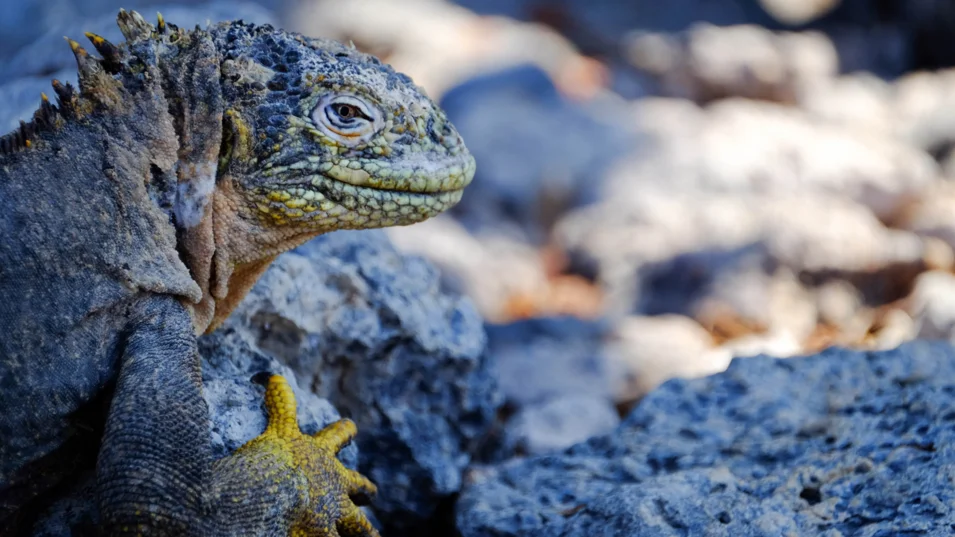
From the top of Chico, which is one of the most picturesque volcanoes here, there is a magnificent view of the northern part and of the neighbouring island of Fernandina. You can also see the world's second largest caldera of Sierra Negra volcano here, with a diameter of 11 kilometres. To feel the true scale of this natural colossus, it is a good idea to climb the slopes of the volcano and then take a horse ride along the crater rim. You can also see lots of birds and animals inhabiting its slopes on the way.
To get back to civilization you can relax on the beach near the town of Puerto Villamil, sipping cocktails at Bar de Beto. If you have more energy, there are places to dance till dawn here, too.
Mariela Island
At the exit of Elizabeth Bay, which is a place with an incredibly beautiful coastline, where turtles feed and rest, there is Mariela Island, a real penguin home. The island is really good for observing penguins from the boat, as you can see them both on the shore and in the water near the islets.
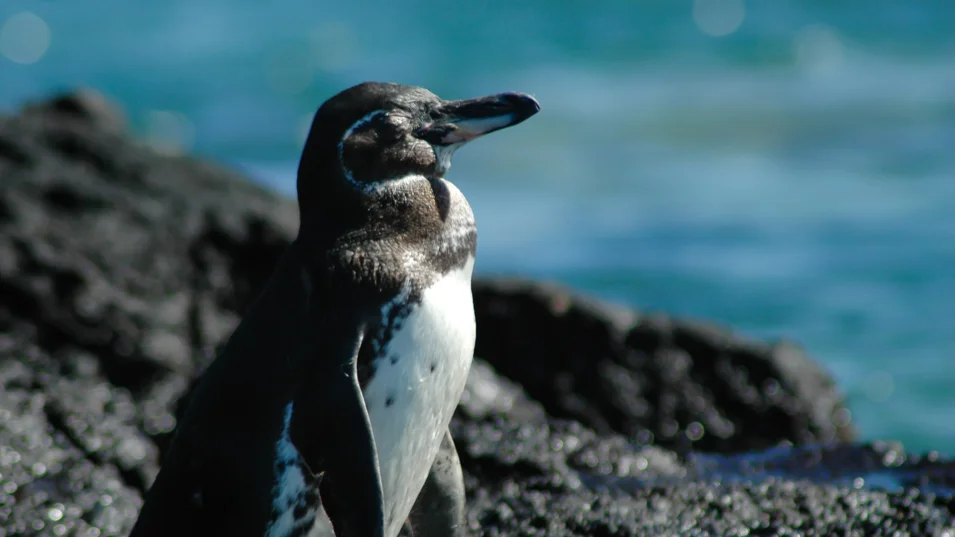
Urbina Bay
There is a coral reef, which appeared a kilometre from the shore in 1954, as a result of the island’s “growth”. The reef is 6 km long and 5 metres above the sea level. It is better not to put off exploring it, as it is gradually getting eroded by the wind.
Tagus Cove
This is pirates’ favourite hideout, and the names and messages left by filibusters in the first half of the 19th century can still be seen on the rocks. If you go inland, there is 9-metre-deep saltwater Darwin Lake nearby, which is a perfect place for observing iguanas and forest birds.
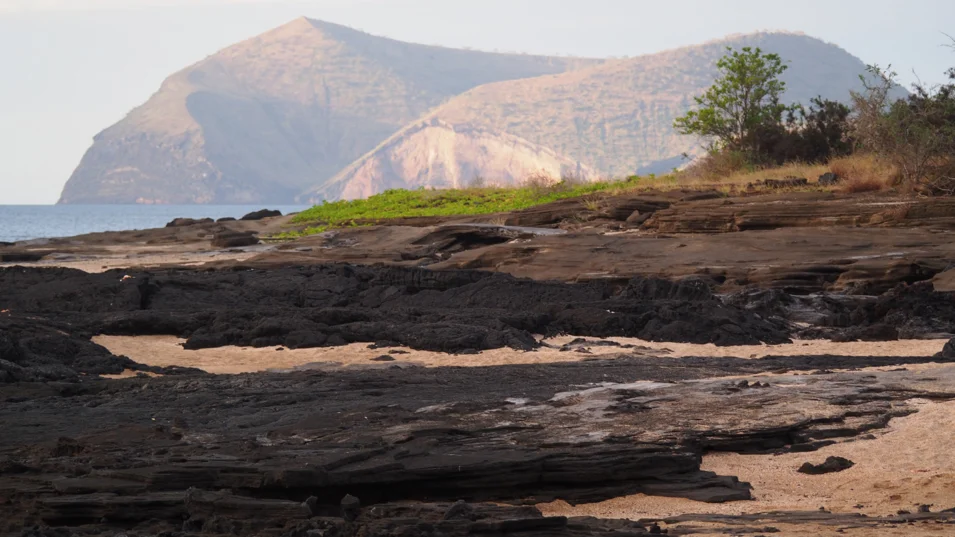
Punta Vicente Roca
You can only get here by water, and it is one of the best sites for scuba diving. Geologically it has become a convenient nesting site for dozens of bird species, while the cold western Cromwell Current brings enough food for whales, dolphins, sea lions, tuna, pelicans and terns. All of them eat at the same time here, which enthrals all those watching this “show” completely.
Santiago Island
In Puerto Egas, at the southern tip of James Bay, there is a unique opportunity to see Galápagos fur seals. Tremendous work that has been done to preserve the natural conditions on the island has paid off: a lot of endangered species have restored their population, including the fur seals, who have found a perfect habitat on the shady shores and in the caves. If you land in Sullivan Bay, you can also see the traces of eruptions of the late 19th century: colourful tuff, pyroclastic cones and mesmerizing landscapes of the island.
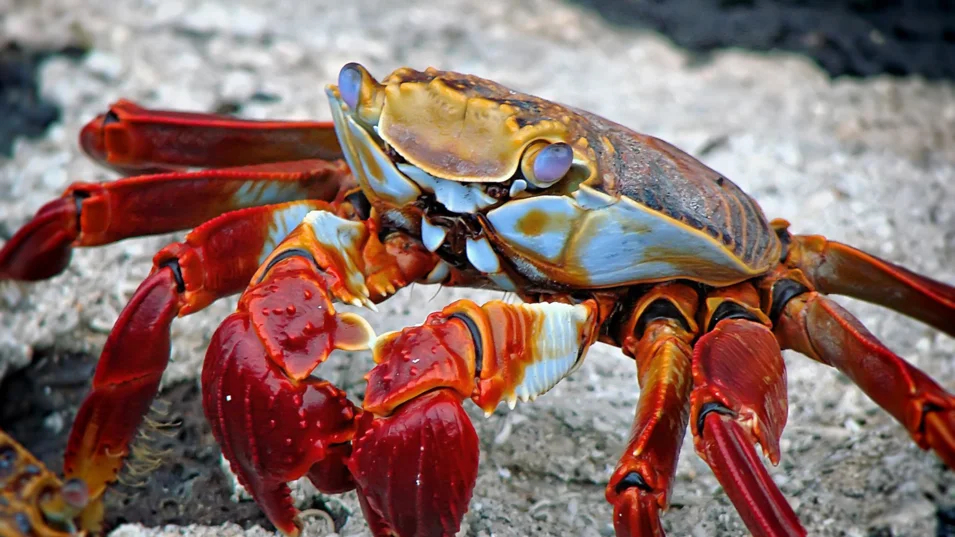
Santa Cruz Island
If you head south from Santiago, you will soon see the main attraction of the island, Las Bachas. It is a coral sand beach with myriads of turtles. The lagoon right behind the beach is home to flamingos, ducks, and migratory birds. This beach is a great place for swimming, and the island is the main tourist centre of the entire Galápagos Archipelago, partly because the airport on the small island of Baltra is close to it.
The largest city and port of the island is Puerto Ayora, located in the south. Bizarre architecture, abundance of restaurants with delicious seafood and other blessings of civilization make it a must-visit place.

San Cristobal Island
Puerto Baquerizo Moreno, the capital of the Galápagos province, is located here, as well as the airport. It is the second largest city in the Galápagos with 5.5 thousand residents. There are five great snorkelling and diving spots on the north-western tip of the island. They are Kicker Rock, or León Dormido, shaped like a sleeping lion, Isla Lobos, Islote Five Fingers and Whale Rock. If you go diving in any of these places, tortoises, sea lions and rare birds are very likely to become your neighbours. But the most impressive landscape is on Kicker Rock. It is a huge 148-meter tuff rock, growing right out of the sea. After another volcanic eruption, the red-hot lava came to the shore, where it was stopped by the ocean. Erosion has divided it into two parts, and now there is a fantastic rift between them, which is large enough for a small boat.
Useful information about the Galápagos Islands
Climate
One of the peculiar features of the islands is that the climate here is not similar to either northern or southern hemispheres. From December to April, it is the warmest time with 24-32 degrees above zero, and from May to November the temperature drops down to 16-24 degrees.
Restrictions
Private vessels are allowed to spend no more than 15 days a year in the protected areas of the Galápagos Islands. In order to visit, one has to fill out a number of forms for the National Park.
How to get there
There are two airports: on Baltra Island north of Santa Cruz, and on San Cristobal. Private jets opt for the first option more often, as it offers better conditions.
Language and currency
The main language is Spanish, but English is no surprises either. Just like everywhere else in Ecuador American dollars are in use, but you can also come across the coins issued by the Ecuadorian government.
Time
The time zone is UTC-0600.
You have successfully subscribed to our newsletter
